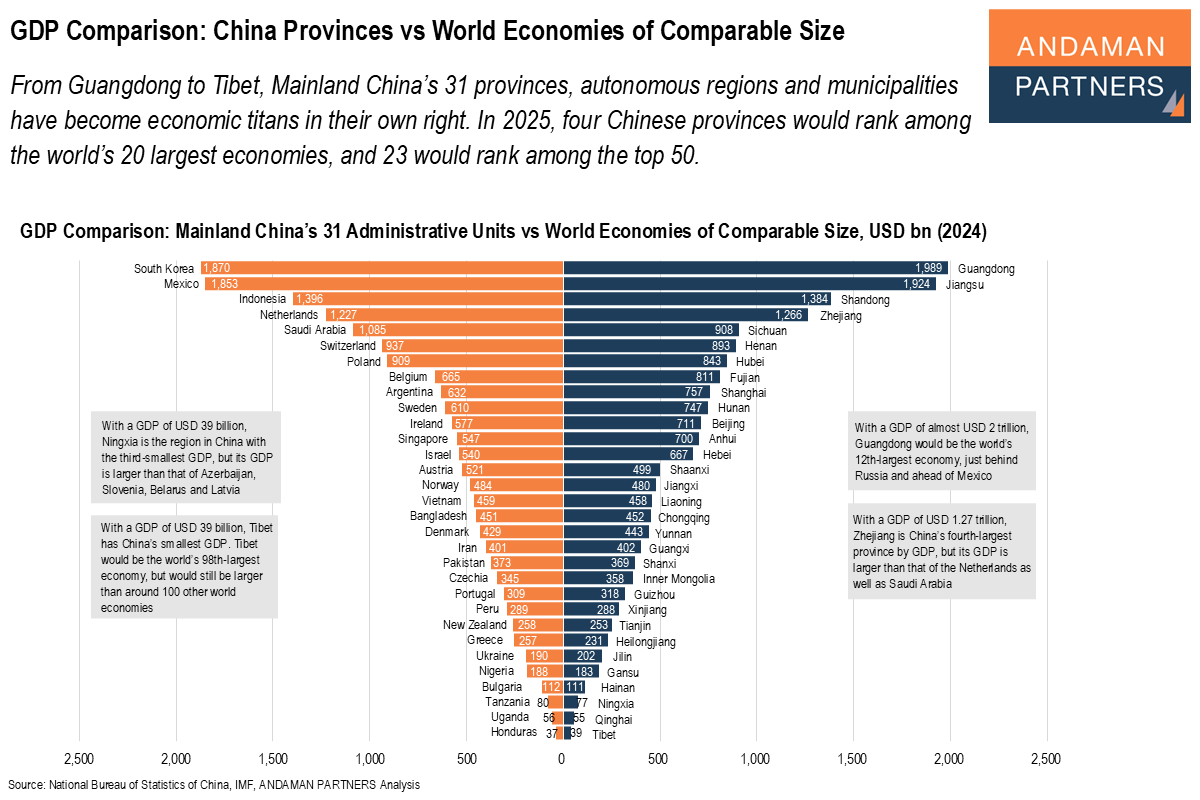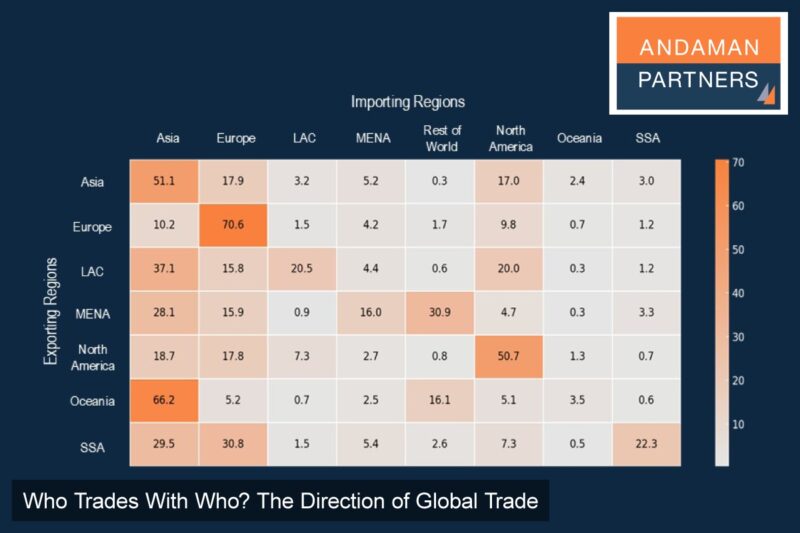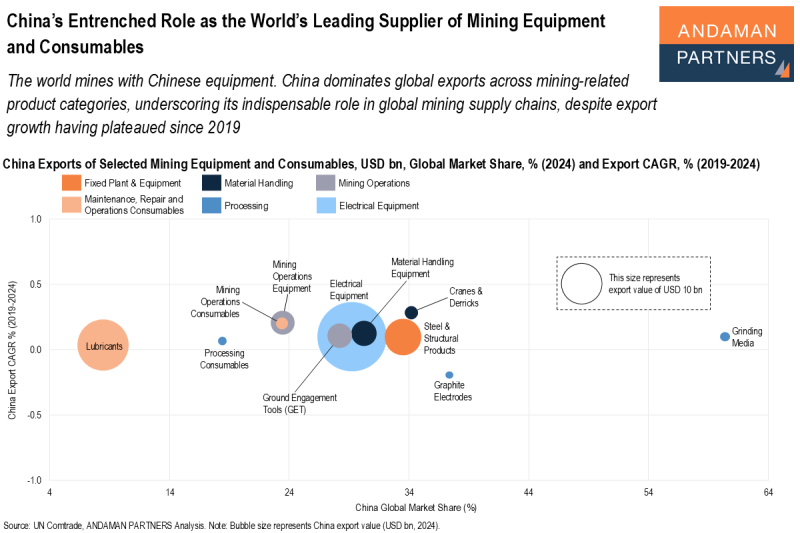From Guangdong to Tibet, Mainland China’s 31 provinces, autonomous regions and municipalities have become economic titans in their own right. Four Chinese provinces would rank among the world’s 20 largest economies, and 23 would rank among the top 50.
China has the world’s second-largest economy, with a GDP of USD 18.80 trillion in 2024. On a regional basis, Mainland China’s GDP is distributed between 31 provinces, autonomous regions and municipalities, from the outsized economic centres of Guangdong and Jiangsu down to the outlying regions of Tibet and Ningxia:
- With a GDP of USD 1.99 trillion, Guangdong is slightly larger than the economy of South Korea, and if considered as a country, would be the world’s 12th-largest economy.
- Guangdong and second-largest Jiangsu (USD 1.92 trillion), whose GDP is comparable with that of Mexico, account for 10% each of China’s total GDP.
- Along with Guangdong and Jiangsu, China has two additional provinces with GDPs over a trillion US dollars: Shandong (USD 1.39 trillion) and Zhejiang (USD 1.27 trillion). These four provinces would currently rank among the world’s 20 largest economies by GDP.
- A total of 23 of China’s administrative units, up to and including the autonomous region of Xinjiang with a GDP of USD 288 billion, would currently rank among the world’s top 50 economies.
- The municipality of Beijing (USD 711 billion) has a larger GDP than the country of Belgium (USD 665 billion).
- At USD 39 billion, Tibet has China’s smallest GDP, although this autonomous region’s GDP would currently be the world’s 98th-largest world economy, and would be larger than around 100 other world economies.
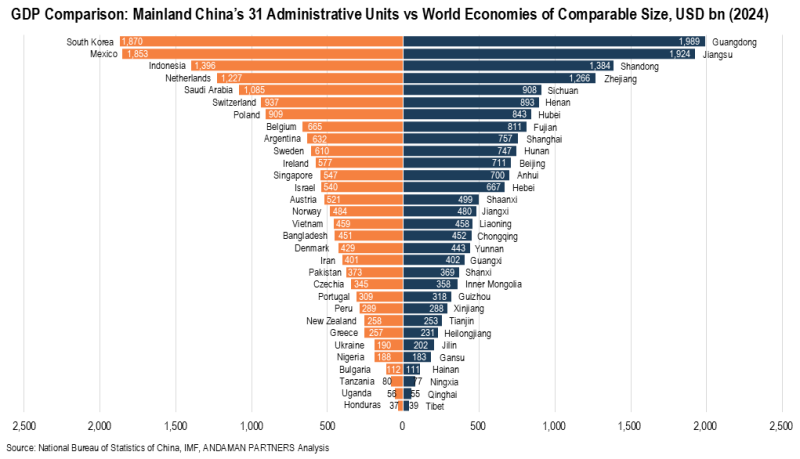
With a GDP of over USD 29 trillion in 2024, the U.S. is the only world economy larger than China. According to data by the U.S. Bureau of Economic Analysis, three states in the U.S. currently have GDPs larger than that of Guangdong: California (USD 4.10 trillion), Texas (USD 2.71 trillion) and New York (USD 2.30 trillion).
Vermont, the U.S. state with the smallest GDP (USD 45.71 billion), has a smaller GDP than all Chinese administrative units except Tibet.
ANDAMAN PARTNERS supports international business ventures and growth. We help launch global initiatives and accelerate successful expansion across borders. If your business, operations or project requires cross-border support, contact connect@andamanpartners.com.

ANDAMAN PARTNERS Wishes You a Merry Christmas and Happy New Year!
Merry Christmas and Happy New Year from ANDAMAN PARTNERS!

AAMEG Sundowner Event in Cape Town Ahead of Mining Indaba 2026
ANDAMAN PARTNERS is pleased to sponsor and support the AAMEG Pre-Indaba Cocktail.

ANDAMAN PARTNERS to Attend Future Minerals Forum 2026 in Riyadh, Saudi Arabia
ANDAMAN PARTNERS Co-Founders Kobus van der Wath and Rachel Wu will attend the Future Minerals Forum (FMF) in Riyadh, Saudi Arabia.
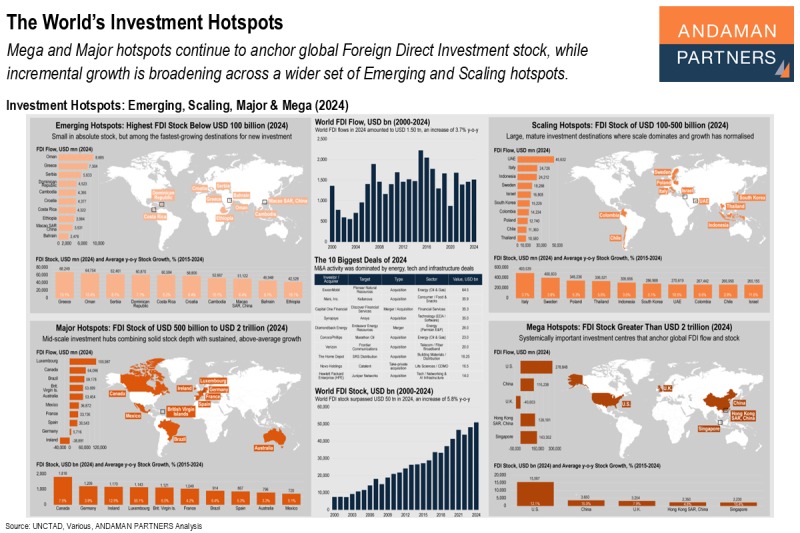
The World’s Investment Hotspots
ANDAMAN PARTNERS presents the world’s investment hotspots in four clusters: Mega, Major, Scaling and Emerging.

Zijin Mining: China’s Flagship Global Metals Firm
Rapid growth, astute deal-making and a widening footprint across strategic metals have transformed Zijin into a diversified, global mining firm.
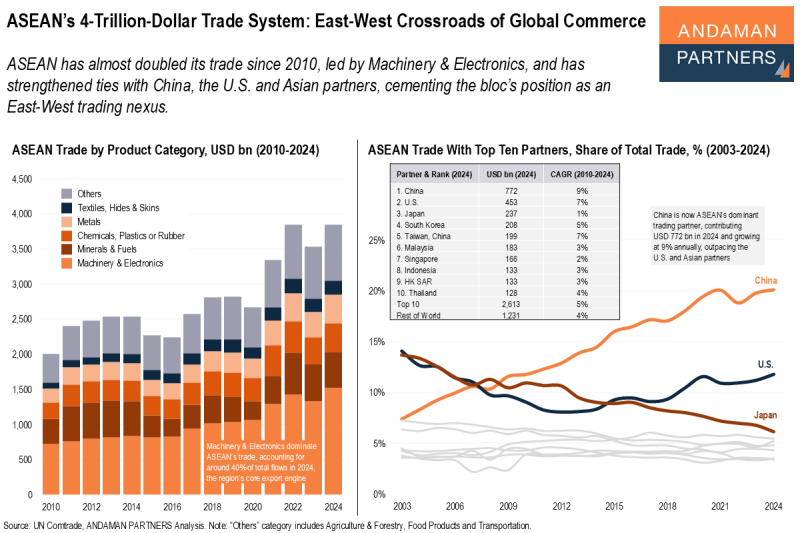
ASEAN’s 4-Trillion-Dollar Trade System: East-West Crossroads of Global Commerce
ASEAN has almost doubled its trade since 2010 and has strengthened ties with China and the U.S., cementing the bloc’s position as an East-West trading nexus.

